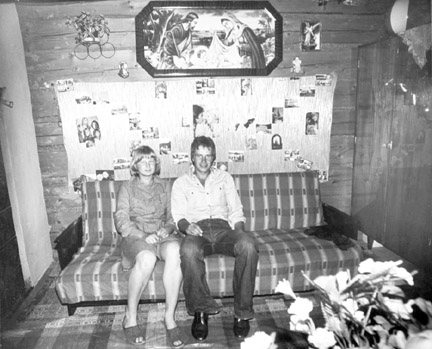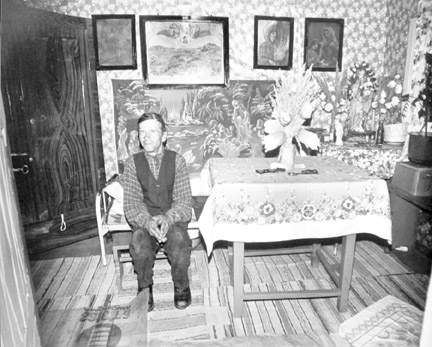About the Photographer
Rydet, Zofia
Polish, 1911-1997
Living and working in Poland, Zofia Rydet was an active photographer for 45 years before her death in 1997. She came to be known for her surrealist imagery and metaphorical photocollages and also, later, for her social documentary work. Toward the end of the 1970s Rydet embarked on a momentual documentary project, titled Sociological Record, which she continued through the final years of her life. In a spirit similar to August Sander's methodical documentation of different social and professional types in Germany at the turn of the twentieth century, Rydet photographed people in their homes in various regions of Poland, often in poor villages.
In terms of composition, Rydet forgoes the rigorous uniformity that has often characterized typological photographic projects—most explicitly in the work of Bernd and Hilla Becher, although Sander also created a sense of regularity by closely and centrally framing his subjects. In Rydet's case, the distance between the camera and the sitters, and where they are situated within the room, vary from image to image. What remains constant is the pose of her subjects, who sit calmly and proudly with their hands on their knees as this stranger enters their home to photograph them. As art historian Urszula Czartoryska observes, "the people seen within the frames of her photographs show no signs of discomfort. Their postures manifest their moral identification with their biographies and environment that apparently includes no secret zones, no undercurrent of panic."
In these photographs the domestic setting is of equal interest to the people sitting for the portrait. As one considers the decor and visible possessions, the living environments reflect the subjects' tastes and beliefs. Many of the places where Rydet photographed had strong religious traditions, for example, and paintings of Jesus or the Holy Family hang on the walls in most of the scenes. In some instances these elements allow for allegorical resonance in images that otherwise have a sociological premise, as in the multiple pictures of young couples sitting beneath paintings of the Virgin Mary and Joseph.




